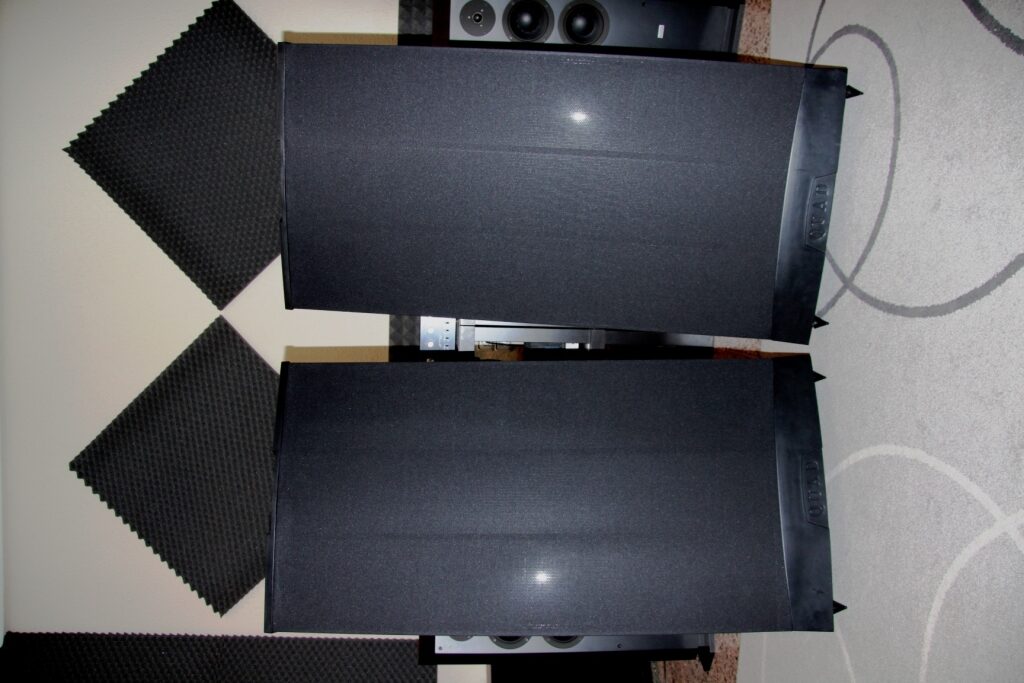Frequent questions
Sound quality
Assessing the quality of a reproductive team is highly complicated. Basically we could reduce it to three aspects.
Quantifiable parameters or measurements in the laboratory, such as harmonic distortion, frequency response, signal/noise ratio, gain or power.
Parameters or measures not quantifiable by laboratory equipment, such as sound warmth, timbre, sound separation, presence. And it is necessary to recognize that although much has been studied and investigated, there are still aspects that technically escape us, and that an experienced ear can come to appreciate.
The personal and subjective evaluation, which begins at the moment that the acoustic waves reach the ear, and whose information is processed and judged by our particular brain, based on our data accumulated in memory, musical culture, tastes, and an endless number of reasons that we obviously cannot and should not go into.
Feedback
The feedback consists of reintroducing with totally opposite sign, a part of the amplified signal in a previous step. It has a positive effect, by improving frequency and harmonic distortion, and a negative effect, by decreasing gain. In small proportions, it can be tolerable, although its use is quite discredited, precisely because it has been excessively abused. Feedback could be assimilated to sauces, which, as chefs say, serve to hide a bad stew.
Power
The power in a domestic amplifier is a very relative thing. When we talk about power, we must refer to real, effective or RMS values, which correspond to standardized units. Musical or peak or eventual powers are nothing more than commercial concepts that have been introduced too commonly to confuse. Although with the logical exceptions for particular cases, in general we could say that a power of 5 W. RMS per channel could be enough for a house.
Valves and other components. Selection. couplet. NOS valves
Any electronic component has manufacturing tolerances. In teams of a certain level, the selection and pairing of components is essential for an optimal result. Paired valve assemblies are regularly offered on the market. We must clarify that, with few exceptions, the aforementioned couplet refers only to its emission capacity, under certain conditions. Therefore, it does not guarantee that the rest of the important parameters, harmonic distortion, frequency response, gain, have values that are neither equivalent nor adequate. It is highly recommended in a self-respecting team, the analysis and selection of each of the elements that compose it, and especially the valves.
Regarding NOS tubes, it is truly a touchy subject. We cannot ignore the in many cases, undeniable constructive and acoustic qualities of these tubes. But it must be taken into account that the simple fact of having been manufactured 30 or 40 years ago, by renowned firms, does not absolutely guarantee its quality or operation, except after a detailed analysis and selection.
HIFI, High-End equipment and its maintenance, are they expensive?
They are very special equipment, almost laboratory, due to their complexity, construction quality and components, which require a very special dedication and maintenance, because their especially demanding owner requires it. This naturally is not within the reach of all budgets. Of course, all teams are different and have their peculiarities. We all know that quality and cost do not follow linear proportions, because after a certain level, a small increase in quality implies a great effort, sometimes disproportionate. A high level team and reduced number of units necessarily means a higher cost. The rule cannot be applied in reverse, that is, the most expensive equipment does not have to be the best either, since there are distorting factors, marketing, valuations that are not very objective or interested, or the opinions of people without any background or technical preparation, which adulterate the result. The choice will necessarily go through two conditions, the budget, and personal appreciation.
Symmetric and asymmetric
The most common mounting is asymmetrical in preamplifiers and power preamps, and balanced, balanced or push-pull in the output stage. In asymmetrical amplifiers or steps, a common point of the input is used regularly connected to ground, with a single amplifier circuit. In balanced or balanced, each of the input poles is sent to an amplifier, using the ground exclusively as a shield and reference point. The symmetric assembly is basically an asymmetric duplicate, where each step acts in the opposite way.
The essential differences between the two are that the symmetrical or balanced one compensates for the lack of linearity of its components, by mutually canceling out the differences, although of course it has twice the circuitry. From the theoretical and acoustic point of view, it is the ideal system. If we focus exclusively on the output stage, an SE provides less than half the power, in addition to necessarily forcing it to work in class A, that is, always at maximum power. Push-pull also has the advantage of compensating for distortion and hum.
Change of final valves. BIAS adjustment
Due to manufacturing tolerances, differences between manufacturers, and between the same valves throughout their useful life, the change of the final or power valves necessarily implies the adjustment of BIAS. This is an extremely delicate operation, which should only be carried out by specialized technicians, since the acoustic result and the duration of the tubes themselves depend on it, and which in some cases has led to breakdowns in other components such as the output transformer or the power supply. The BIAS adjustment does not follow fixed rules for a certain type of tube, since it depends on the type of amplifier (A, AB) and the tube itself, respecting in any case the designer’s criteria, although without exceeding its maximum power of dissipation


